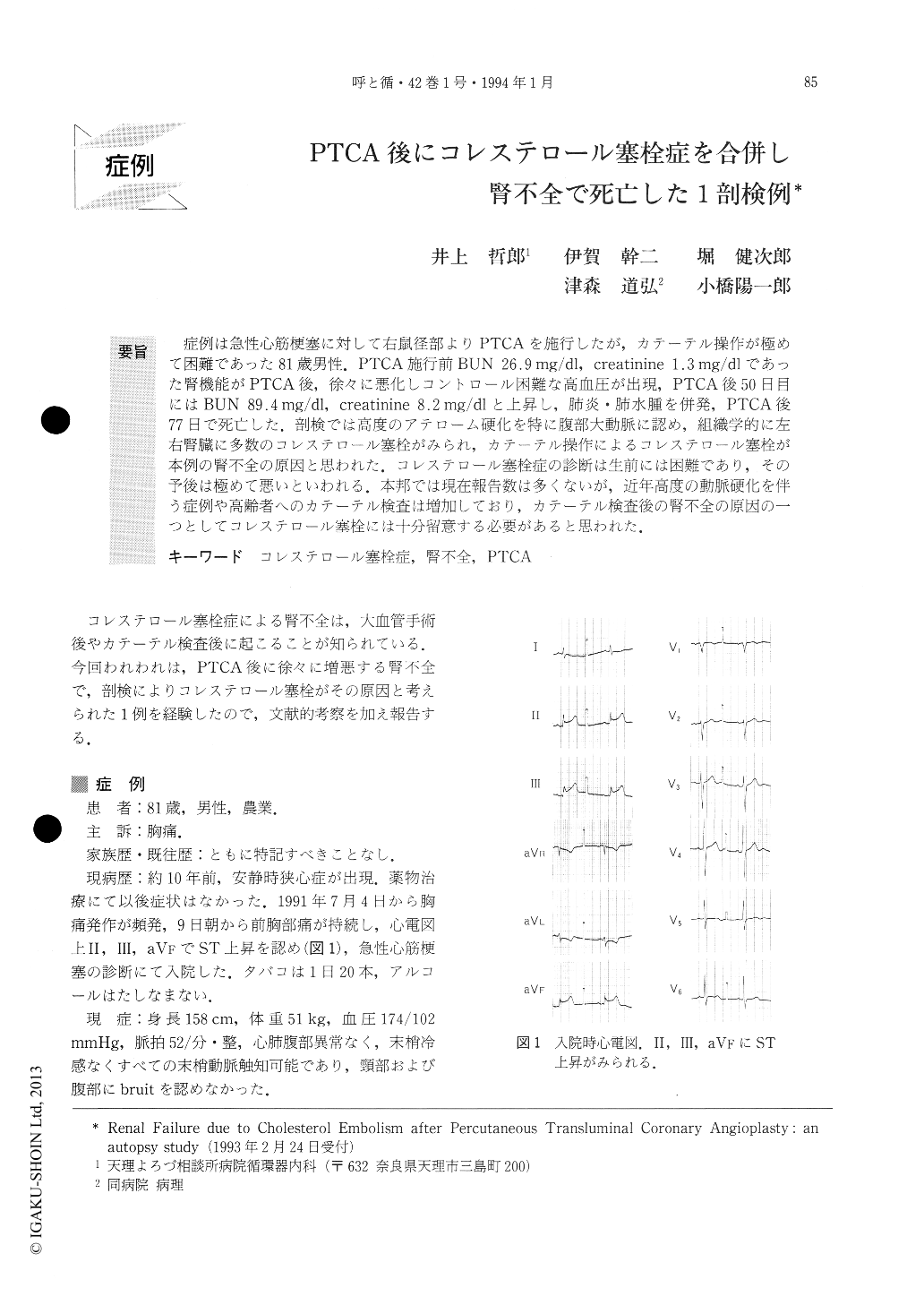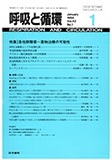Japanese
English
- 有料閲覧
- Abstract 文献概要
- 1ページ目 Look Inside
症例は急性心筋梗塞に対して右鼠径部よりPTCAを施行したが,カテーテル操作が極めて困難であった81歳男性.PTCA施行前BUN 26.9mg/dl,creatinine 1.3mg/dlであった腎機能がPTCA後,徐々に悪化しコントロール困難な高血圧が出現,PTCA後50日目にはBUN 89.4mg/dl,creatinine 8.2mg/dlと上昇し,肺炎・肺水腫を併発,PTCA後77日で死亡した.剖検では高度のアテローム硬化を特に腹部大動脈に認め,組織学的に左右腎臓に多数のコレステロール塞栓がみられ,カテーテル操作によるコレステロール塞栓が本例の腎不全の原因と思われた.コレステロール塞栓症の診断は生前には困難であり,その予後は極めて悪いといわれる.本邦では現在報告数は多くないが,近年高度の動脈硬化を伴う症例や高齢者へのカテーテル検査は増加しており,カテーテル検査後の腎不全の原因の一つとしてコレステロール塞栓には十分留意する必要があると思われた.
We present an 81-year-old male who died of gradual renal failure 77 days after percutaneous transluminal coronary angioplasty (PTCA). PTCA was technically difficult and time consuming because the abdominal aorta was markedly tortuous. At autopsy, severe ather-omatous plaque was present especially in the abdominal aorta and cholesterol emboli were seen in both kidneys.
With the development of new PTCA devices and improvements in PTCA technique, an increasing num-ber of older people will become candidates for cardiac catheterization.

Copyright © 1994, Igaku-Shoin Ltd. All rights reserved.


